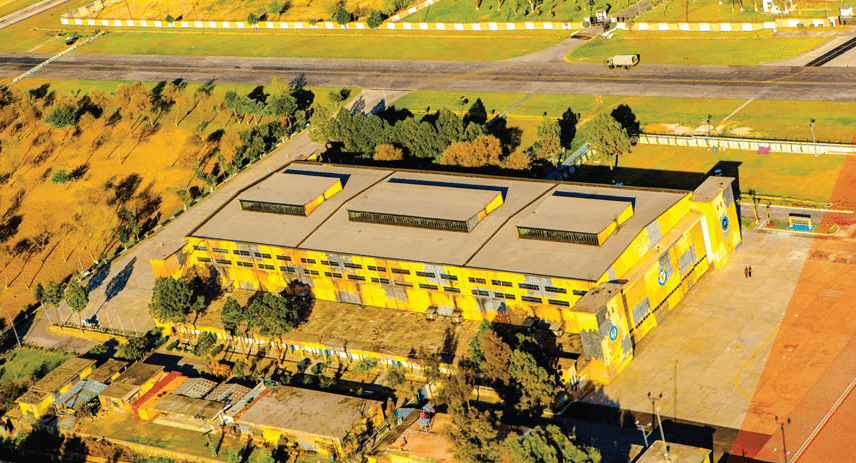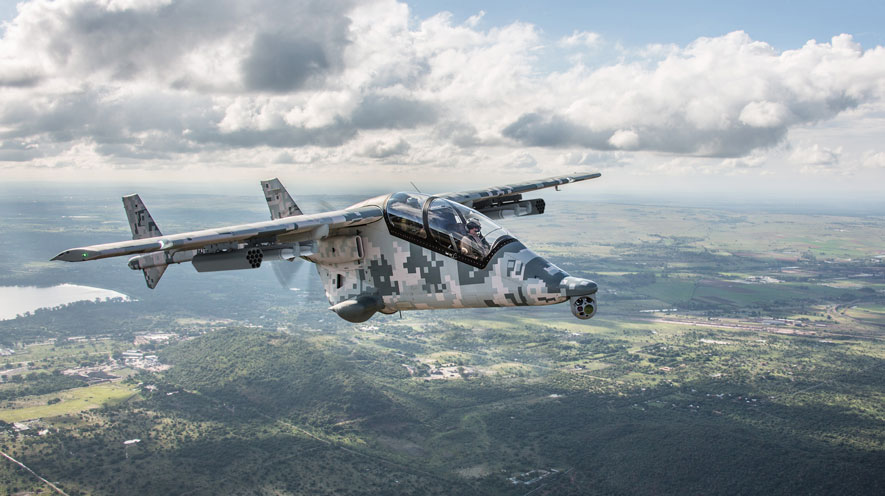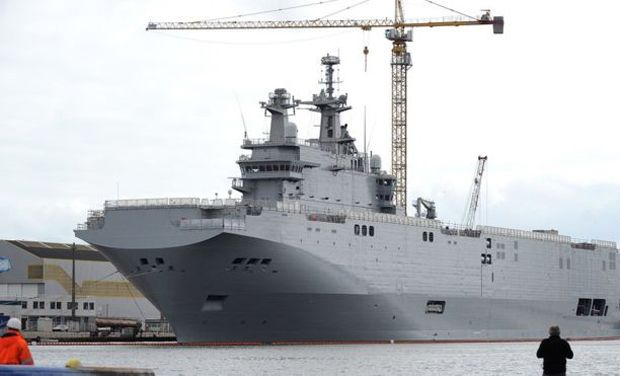2633Views 19Comments

Pakistan aspires for CPEC-driven aviation industry growth
In a one-day symposium – titled “CPEC vis-à-vis Opportunities for Aviation Industry and Way Forward” – the Government of Pakistan, the Pakistan Air Force (PAF), the Pakistan Civil Aviation Authority (PCAA) and members of the private sector collectively expressed hope that the China Pakistan Economic Corridor (CPEC) would spur growth in Pakistan’s aviation sector.
The Daily Times (Pakistan) compiled a report outlining the thoughts and aspirations of each symposium participant, which included the Federal Interior Minister Ahsan Iqbal, the PAF Chief of Air Staff (CAS) Air Chief Marshal (ACM) Sohail Aman and other leading officials and industry representatives.
Short-term objectives center on guaranteeing the security of CPEC projects. In this respect, the PAF had outlined its success in building a capable intelligence, surveillance and reconnaissance (ISR) element for providing situational awareness for all relevant parties, including its sister services the Pakistan Army and the Pakistan Navy. The PAF had also expressed confidence in its ability to counter asymmetrical threats through precision-guided airstrikes. It is also committed to providing search-and-rescue support.
The panel’s long-term aspirations echoed earlier government sentiments, namely of channeling projected economic growth from CPEC to effect industry gains. In this case, it is aviation.
PCAA Additional Director of Air Transport International Regulation Syed Muzaffar Alam projected that air travel in Pakistan will see an additional three million passengers in the next three to four years. Alam believed that this growth will present opportunities for growth in Pakistan’s commercial airline sector, be it new airlines or expanded ground support providers. In relation, PAF Air Vice Marshal Razi Nawab, the Deputy Managing Director of the Shaheen Foundation, stressed that investment be made in raising new maintenance, repair and overhaul (MRO) entities and airlines in Pakistan to support growth in air travel.
Interior Minister Dr. Ahsan Iqbal called for developing Pakistan’s aviation development and manufacturing sectors, particularly through “Technology Intensive Clusters” at Pakistan Aeronautical Complex (PAC) in Kamra. He also advocated for research and development, joint-ventures and public-private partnerships.
The participating stakeholders proposed raising a joint working group comprising of representatives from the Government of Pakistan, the PAF, PCAA, the private sector and academic institutions to steward the objectives discussed at the symposium.
Notes & Comments:
There are two overarching aspects to the symposium. First, the necessity of airborne systems for providing security to CPEC projects. Second, aspirational aims for using CPEC to fuel growth in Pakistan’s aviation sector, be it increasing demand for commercial air services or spurring relevant industry work.
For the first aspect, the PAF tabled the ISR and precision-strike capabilities it built to fulfill Pakistan’s counterinsurgency (COIN) requirements. The PAF ISR element comprises of diverse assets, among them C-130Bs fitted with FLIR Systems Star SAFIRE III electro-optical and infrared (EO/IR) turrets, Falco unmanned aerial vehicles (UAV) configurued with L-3 WESCAM EO/IR turrets and F-16s equipped with DB-110 photo-reconnaissance and Sniper advanced targeting pods (ATP).[1]
Besides building situational awareness of the ground environment, these assets can pivot to provide target acquisition and guidance support for precision-strikes. This is done in conjunction with the EO/IR-equipped C-130Bs or Joint Terminal Attack Controllers laser-designating targets for F-16s armed with GBU-10 or GBU-12 laser-guided bombs (LGB), or stand-alone with F-16s using the Sniper ATP for targeting, terminal guidance and deploying LGBs (this is discussed in detail in an earlier Quwa article).
Apart from later including the JF-17 to undertake precision-strike and partial-ISR (via LGBs paired with the Aselsan ASELPOD targeting pod), it is unlikely that the PAF will significantly change its equipment-set for asymmetrical engagement. In fact, the integration of the PAF into the CPEC security dynamic appears to mirror its current approach to COIN, if not be an extension of the Pakistan military’s existing push against non-state actors and asymmetrical threats.
The second aspect is less grounded at this time, but some aspects, such as the call for expanding Pakistan’s MRO base and deepening the aviation-related manufacturing, echo government and PAF goals set under Project Azm. In July, Ahsan Iqbal (then Minister of Planning and Development) stated: “I hope that this … city will not only help us develop capabilities in defence or security domains, but I sincerely believe that this aviation city will also become the birthplace of commercial aviation industry in Pakistan.”
Although with significant objectives (discussed in another Quwa article), the Kamra Aviation City initiative is in its early stages of development. Moreover, these projects are currently oriented to fulfilling the PAF’s long-term defence programs: medium-altitude long-endurance UAV and a 5th-generation fighter. Pakistan has yet substantively invest in manufacturing work for commuter aircraft or regional airliners.
[1] Alan Warnes. “Intel Report: “Swapping ‘Old Paper Maps’ for ISR.” Air Forces Monthly. August 2017



19 Comments
by Jigsaw
Not too worried about asymmetric threats. They’re handling them fine already and will continue to do so. The emerging and real threat is changing Pak-US geopolitics driven by CPEC. The big question is are we going to witness Pakistani gov asking PAF and other military branches to secure Pakistani airspace from any future US Drone strikes targeted in major western cities (read CPEC routes), as has the US signalled those kind of intentions already.
by Steve
One of the most important security issue related to CPEC is intelligence; in addition to surveillance drones, ISR, pods etc. ISI have their work cut out, and recently have been very effective. Also need intelligence sharing with Iran so that they don’t allow use of their territory. Reciprocal arrangements need to be worked out and it is probably beyond the remit of this conference. We won’t get anywhere with Afghanistan I’m sure, so fencing, border radars etc are required. Just go to the Iranians, shake hands, and talk. Needs major political input by our competent effective PML-N lol!
by Mani Hussain
Pakistan should be thinking of how to attract foreign carriers , not how good PAF can defend airspace ! PIA with no competition , is currently running huge losses . PIA poor management , below standard service & the entire shambles of baggage handling at Islamabad is enough to put off any tourist to Pakistan for ever .
This forum should also include how basic business can be improved for civilian passengers . To start with, PIA should employ ALL staff from overseas including MD, captains, flight crews & definately airport staff .
After this, no Pakistan government leader should interfere nor implant their man to run private companies such as PIA.
by ahmria
All the drone strikes carried out by the Americans have been done with the knowledge of government and PAF. I doubt the Americans or any other nation can easily fly in a non stealthy uav through military and commercial radar without it being picked up. Look what happened to that Iranian uav relatively recently in Pakistan.
by pallab hazarika
Build more nuclear weapons instead
by Steve
The Iranians captured an American RQ-170 Sentinal whatever the cause of its crash landing. They also shot down another American UAV over the Gulf a few years ago and America could not do anything. Pakistan should make use of their Predators flying over FATA as leverage. Also the trucks supplying their forces. Time to play hard ball! They can’t fly any UAV over Pakistan unless we allow. They are not all-powerful as chubby jovial little Kim is showing lol!
by Steve
PIA is the victim of political interference and incompetence as a result of that. It’s not the fault of PIA but of our poisonous corrupt politicians. In the 1960’s PIA was a model airline, before the gift of democracy bestowed on the nation ruined it.
by Nadeem
Talking about intelligence gathering one of the most important force multipliers is an operational
military satellite. There was a time when Pakistan was way ahead of our neighbour in this field!
Not any more I am afraid! shame really!
by Jigsaw
Technically true. PAF knows about it. The military knows about it. Technically they can stop it as well as PAF chiefs have said it loudly we will take them down if Gov asks us. However the decision to bring them down is a little more than technical and military one. So, i suppose that’s what i said earlier. “If the government will ask PAF to secure Pakistani airspace”.
If military has no jurisdiction to rule the country, they also should not have any jurisdiction to calling shots to decide on drone strikes. It’s govs job to decide and PAF will follow. But i suppose for all that job, first you need a gov, which has been missing for at least last 10 years now in Pakistan.
by sami shahid
That is silly
by sami shahid
Why the Pakistani government wants everything to be related with CPEC ? Can’t the Pakistani government buy few gunship helicopters from Turkey & few fighter Air crafts from China or Russia ? I’m sure it can !
by Steve
SUPARCO need a kick up the backside, along with a bag of money.
by Steve
Problem is our relationship with the US is not defined. Neither the military nor the public have clarity. Politicians are just subservient corrupt idiots so who knows. All radars on the West were switched off and everyone on the ground was sleeping for the 1 hour during the event, when the Abbottabad raid took place. Interesting.
by middleway1
No need for overseas staff. Just privatize it. But privatize properly, meaning establishing proper valuation first, then selling shares to the public, not some crooked politician crony, or some foreign firm who pays pennies for the dollar, and the crooked bureaucrats get to line their pockets.
by ahmria
As Jigsaw said it’s more a political decision than a military one. The airforce could shoot down the drones however unfortunately for us the government are puppets to their own greed and American demands. with all our F16s the Americans have leverage over us in terms of spare parts and if we shoot down their drones and stop cooperating with them then our Vipers will soone become expensive toys that can’t fly. This is why we need to diversify our military assets.
by ahmad bhutta
by the time world will be inventing invisible planes we will still be boasting our JF17 :/ iskay ilawa aur kuch nahi banana kia pakistan nay?
by Nadeem
Lol!
by Jigsaw
I agree 100%. Both the military as well as nation is confused what is going on and how to handle it.
by Manzoor Hussain
Pakistani Politicians from the two main corrupt parties of PPP and PML-N , do not want the masses educated. Otherwise, the ordinary people might start asking proper questions and then start voting with their brains, rather than on say so of the of inept local wealthy candidate.
With iron fist and complete devotion, Pakistan must make education, more education and even more education its new war. It must be made compulsory for its bulging youth until the age of 20 years. A lot of wasted money on useless government offices, CPEC and military should be diverted towards developing the nation’s future intelligent people through targeted qualification.
If this happens, within 10 years, Pakistan will be one of the most advances countries, higher GDP, stronger military and respected political force in the world.
Permanantly silence proven corrupt parties of Bhutto clan & Nawaz Sharif, allow Imran Khan to become PM, you will see results… its there for taking